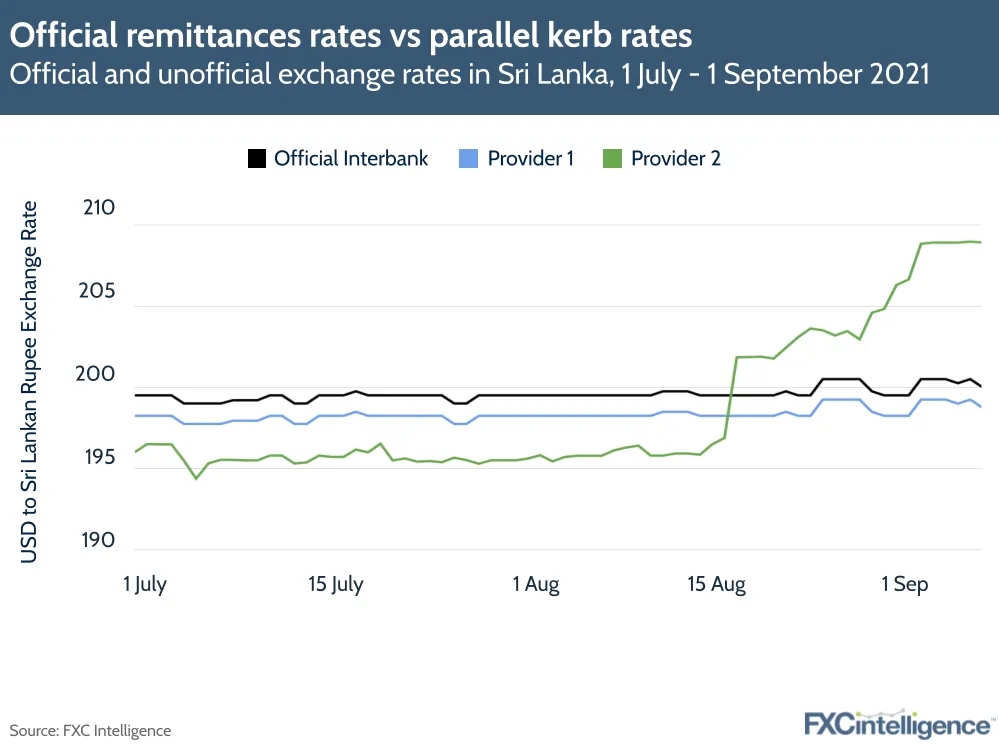Several countries that migrants send money home to have dysfunctional currency markets, due to balance of payments problems, macroeconomic and geopolitical factors. This can result in unofficial parallel exchange rates being widespread – which the remittance industry is often not fully taking account of.

In countries with parallel exchange rates, official benchmark exchange rates (e.g., Reuters or Bloomberg rates) do not reflect the actual exchange rate to convert local currency to a hard currency such as the USD or EUR. Instead, actual parallel exchange rates require more local currency units per hard currency unit than is reported in official exchange rates.
Our own tracking of FX pricing data has led us to identify numerous countries with divergences from official exchange rates. For example, the Sri Lankan rupee came under significant pressure during late-August / early September. Parallel market cross border rates were significantly different from official rates. The unofficial parallel kerb rate had increased to approximately 1 USD to 215-230 Sri Lankan rupees in early September, versus 200 officially.
In addition to Sri Lanka, other countries we have identified include:
- Syria
- South Sudan
- Myanmar
- Nigeria
- Argentina
- Venezuela
While some remittance providers respond to these parallel rates, others do not – with potentially significant consequences for their customers. These parallel markets and how providers respond have implications for how much money the remittance recipient will receive and how they can receive it.
Customers are also likely to switch to parallel channels due to convenience, and these parallel markets cannot be tracked.
Find out how official and unofficial remittance rates compare


